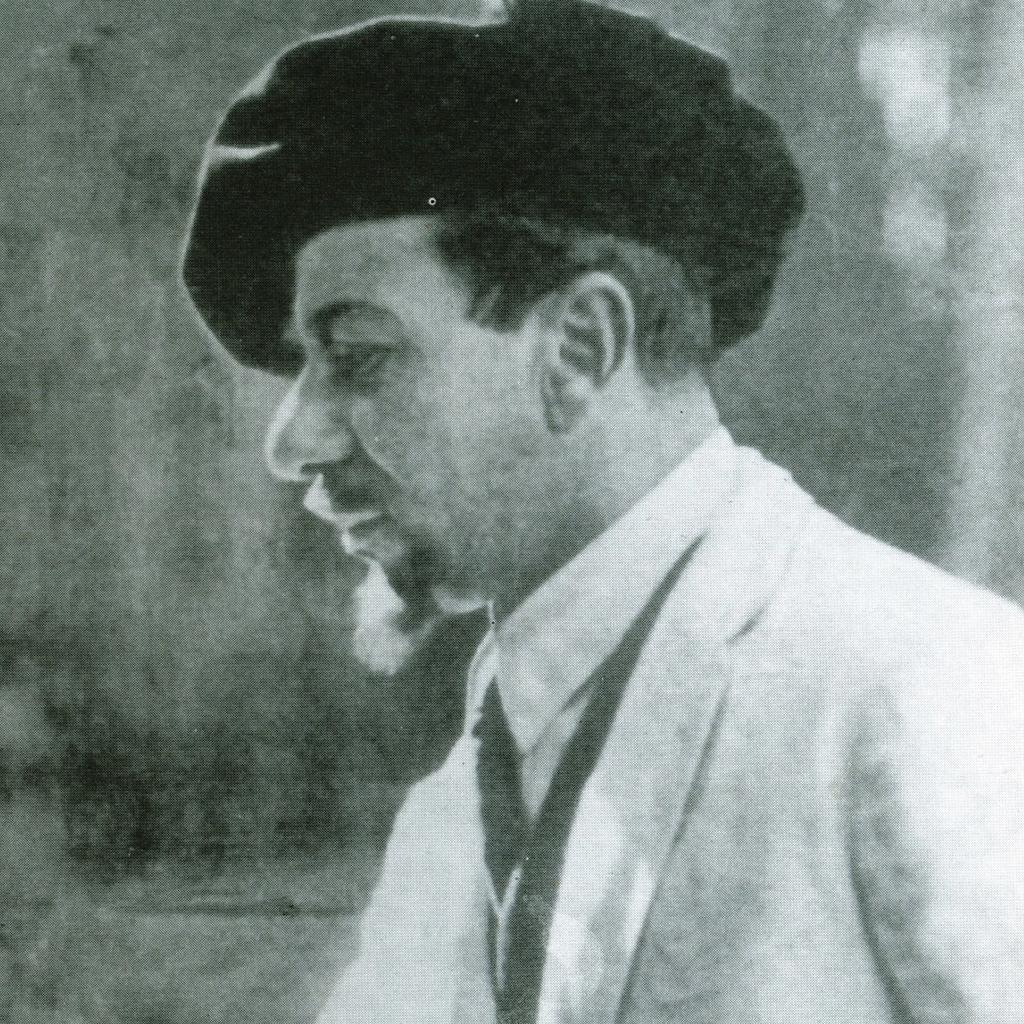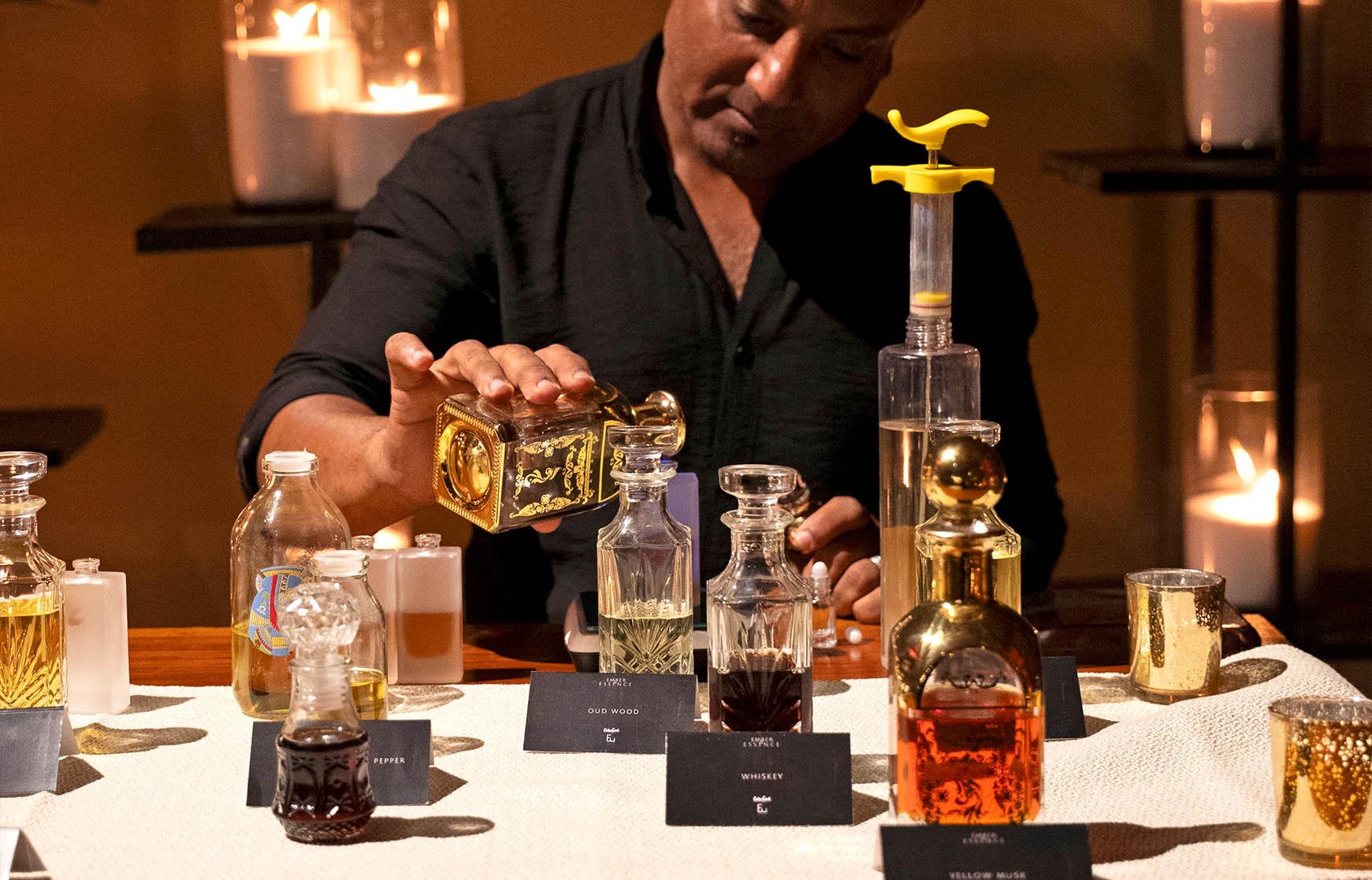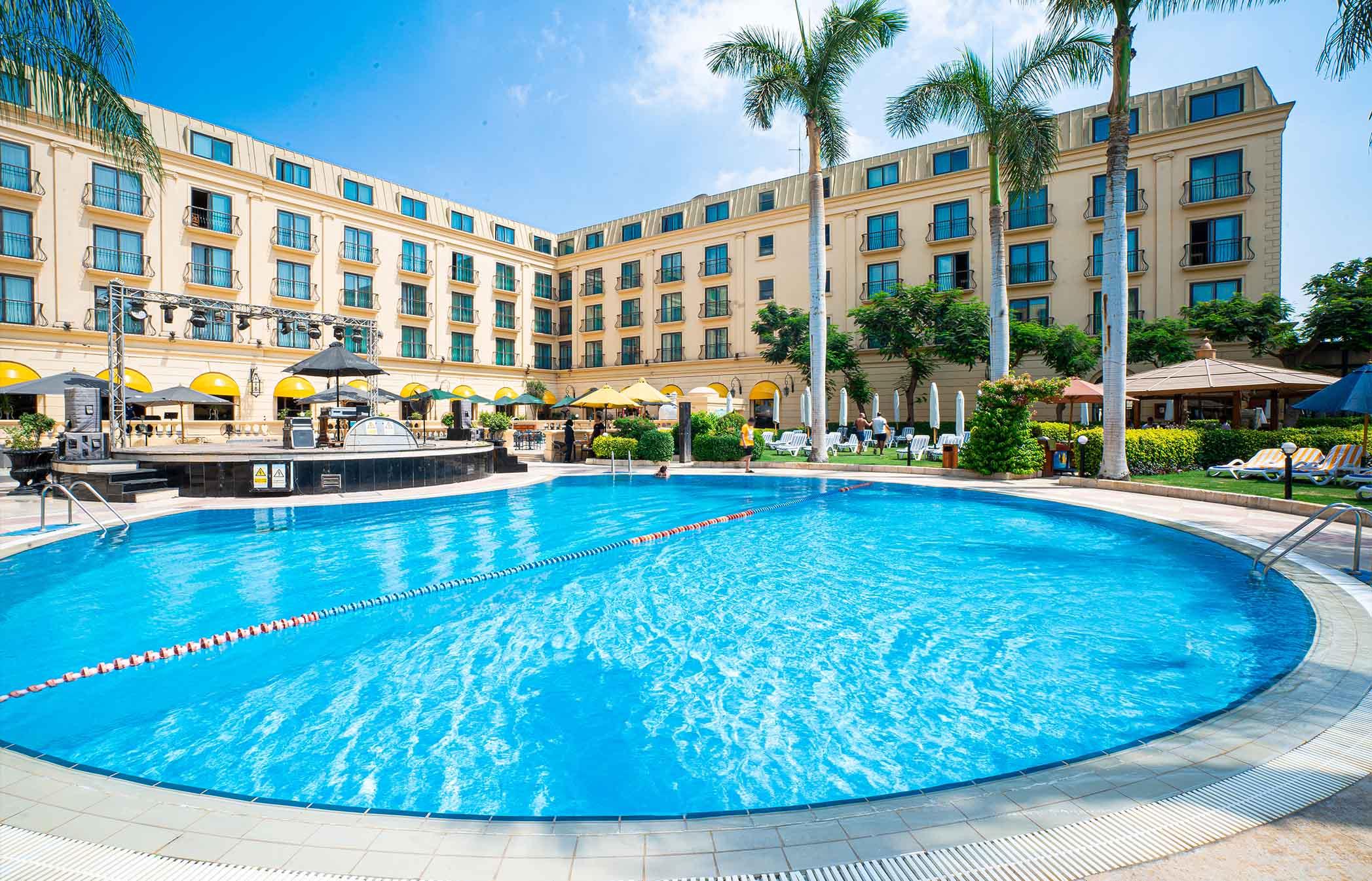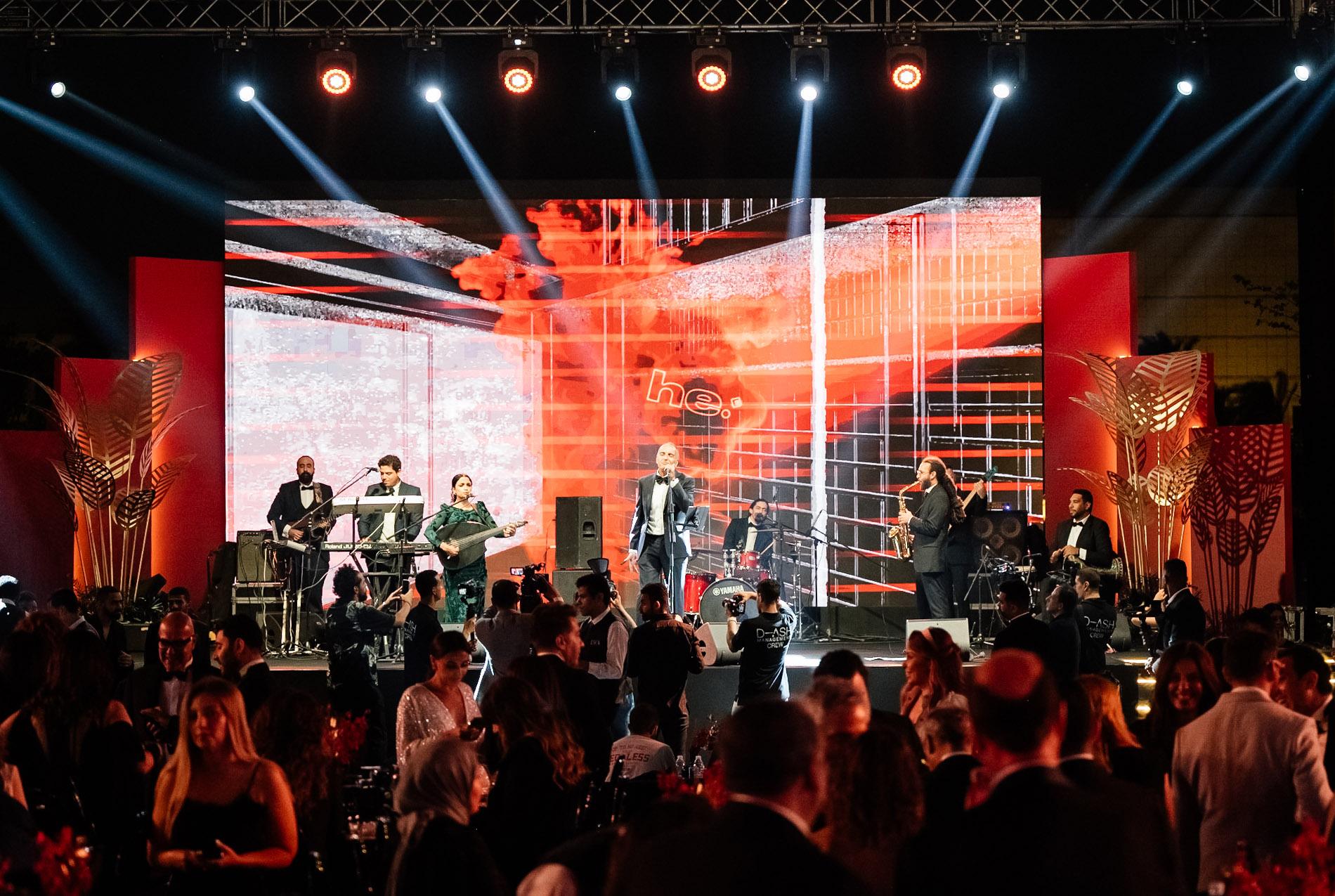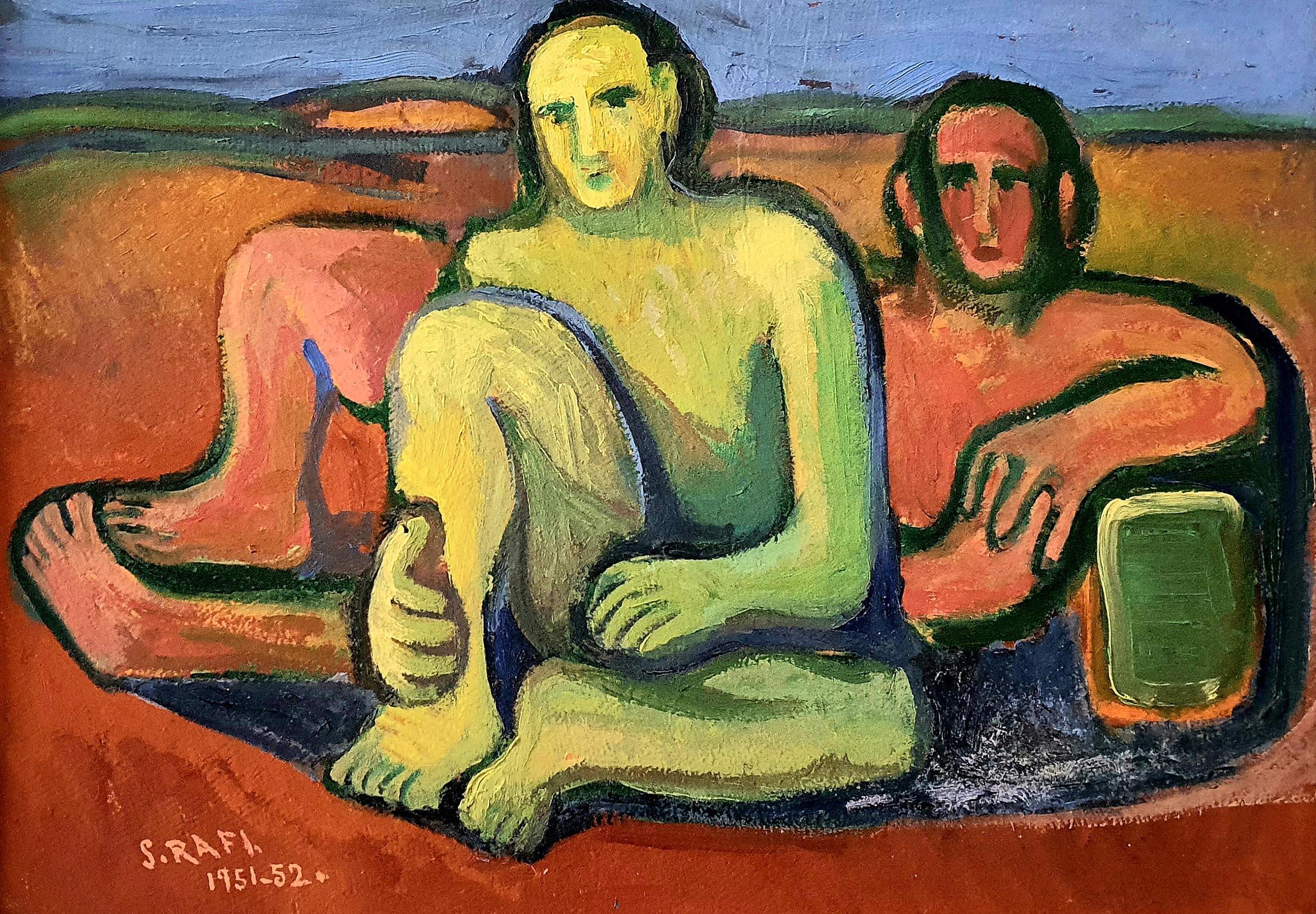
Written by: Dr. Ashraf Reda
Date: 2023-06-12
The Centennial of the "Society of Fine Arts Lovers"
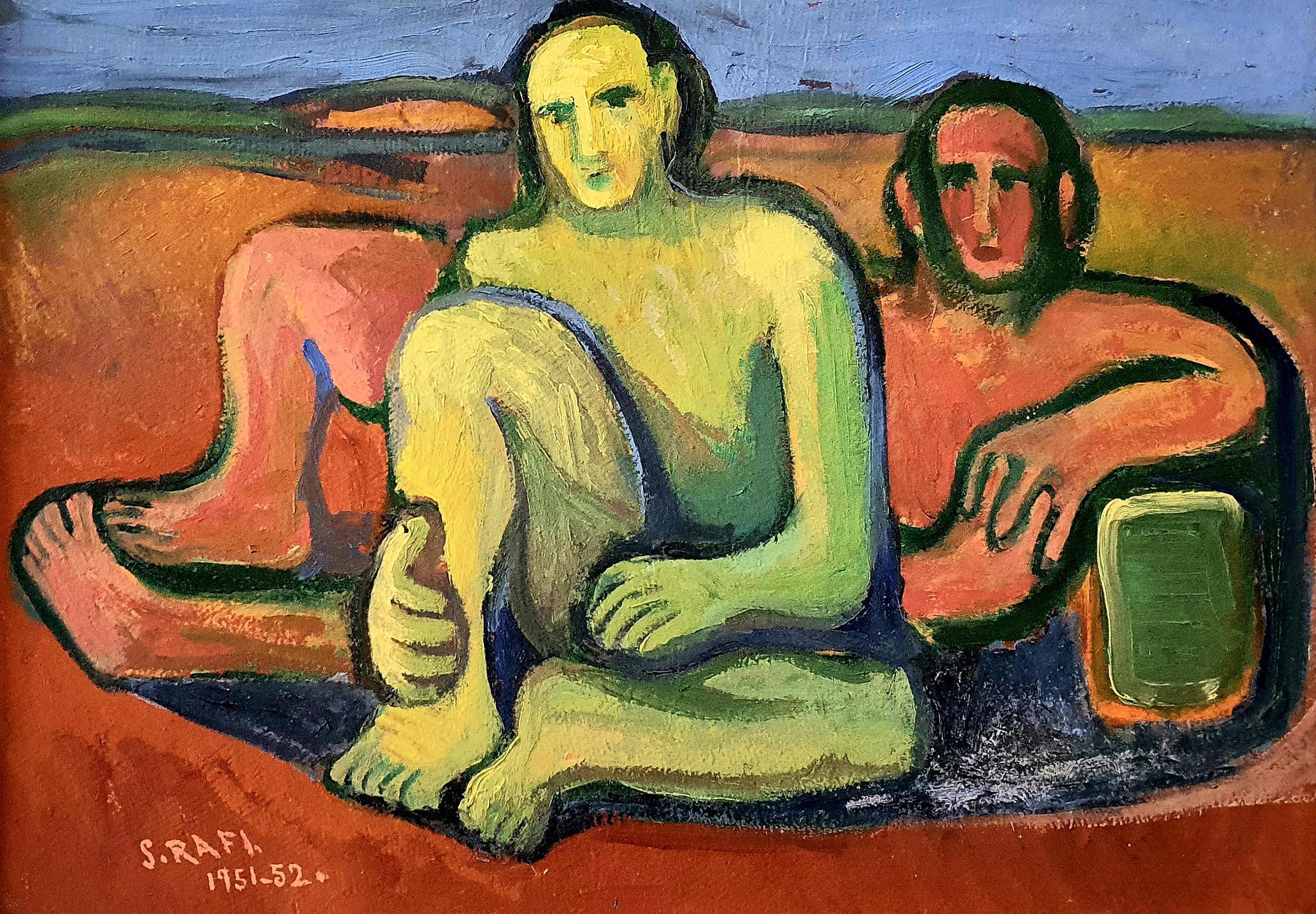
The Centennial of the "Society of Fine Arts Lovers"
(1922-2022)
In May 1918, Professor Tawfik Habib, the editor of Al-Akhbar newspaper and former columnist of Al-Ahram newspaper, sent a letter to all art enthusiasts, practitioners, and professionals. In his letter, he wrote: "The honorable Professor Ragheb Effendi Ayad, along with a group of his fellow drawing professors, proposed the establishment of an annual exhibition showcasing the works of artists engaged in drawing, painting, and engraving in all its forms. As I am aware that you are among those engaged in these arts, I kindly request your presence on Tuesday, May 14th, at 6 PM, at the Reform Society Hall in the Christian Youth Club, next to the Azbakeya Police Department, to meet with the esteemed artist professors and discuss the necessary preparations for the first exhibition. If you are unable to attend this session, I kindly ask you to inform me of the type of art you excel in and provide details of what you could present. With warm regards."
Indeed, a large number of artists gathered and discussed the importance of holding an exhibition to display their artistic paintings and sculptures. They agreed on this idea, and Ragheb Ayad proposed that the exhibition be divided into two sections: one for amateur artists and the other for professional professors. However, most attendees did not agree with this proposal, leading to the withdrawal of Ragheb Ayad and, prior to him, Tawfik Habib. As a result, this exhibition was largely composed of works borrowed from international artists. It faced criticism from many art professors and foreigners, resulting in its failure.
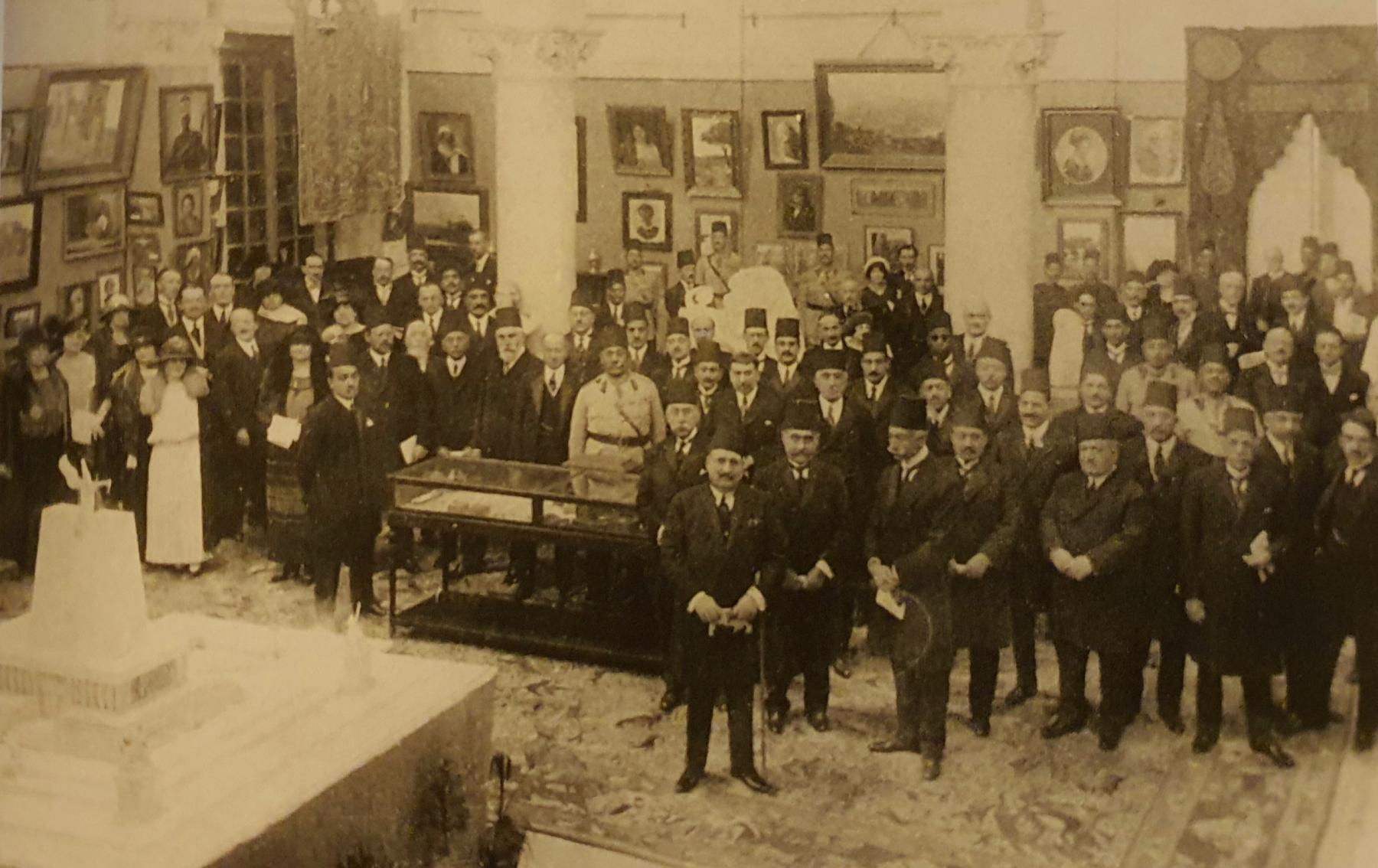
Meanwhile, after the artists who shared a common purpose got acquainted, they gathered again and formed the "Egyptian Society of Fine Arts." They organized the first exhibition in March 1919 at the "House of Arts and Industries," established by Fuad Abdel-Malik (1878-1955) upon his return from his tour in Europe, a year after the end of World War I. He called for organizing this exhibition at the premises of his institution under the patronage of Mrs. Huda Shaarawi (1879-1947). The graduates of the first class of the School of Fine Arts participated, including the sculptor Mahmoud Mokhtar and the painters Ragheb Ayad, Youssef Kamil, and Mohamed Hassan. The avant-garde artists, such as Ahmed Sabry, Mahmoud Said, Mohamed Nagi, and Shafik Sharobim, also participated, alongside foreign residents in Egypt, such as Roger Briavalle, Pierre Bibe Martan, Charles Boghlan, Ainouchi, and Colucci.
The former prince Mohammed Ali, son of Khedive Tawfiq, and Princess Samiha Hussein, daughter of Sultan Hussein Kamel, also participated in the first exhibition. The exhibition witnessed significant attendance, particularly from Prince Youssef Kamal, the founder of the School of Fine Arts, as well as the leader Saad Zaghloul, Hussein Pasha Rushdi, Adly Yakan Pasha, Ali Kamel Fahmy Pasha, and others who acquired all the exhibited artworks. This success served as a great motivation for the artists to continue their mission and promote modern Egyptian art.
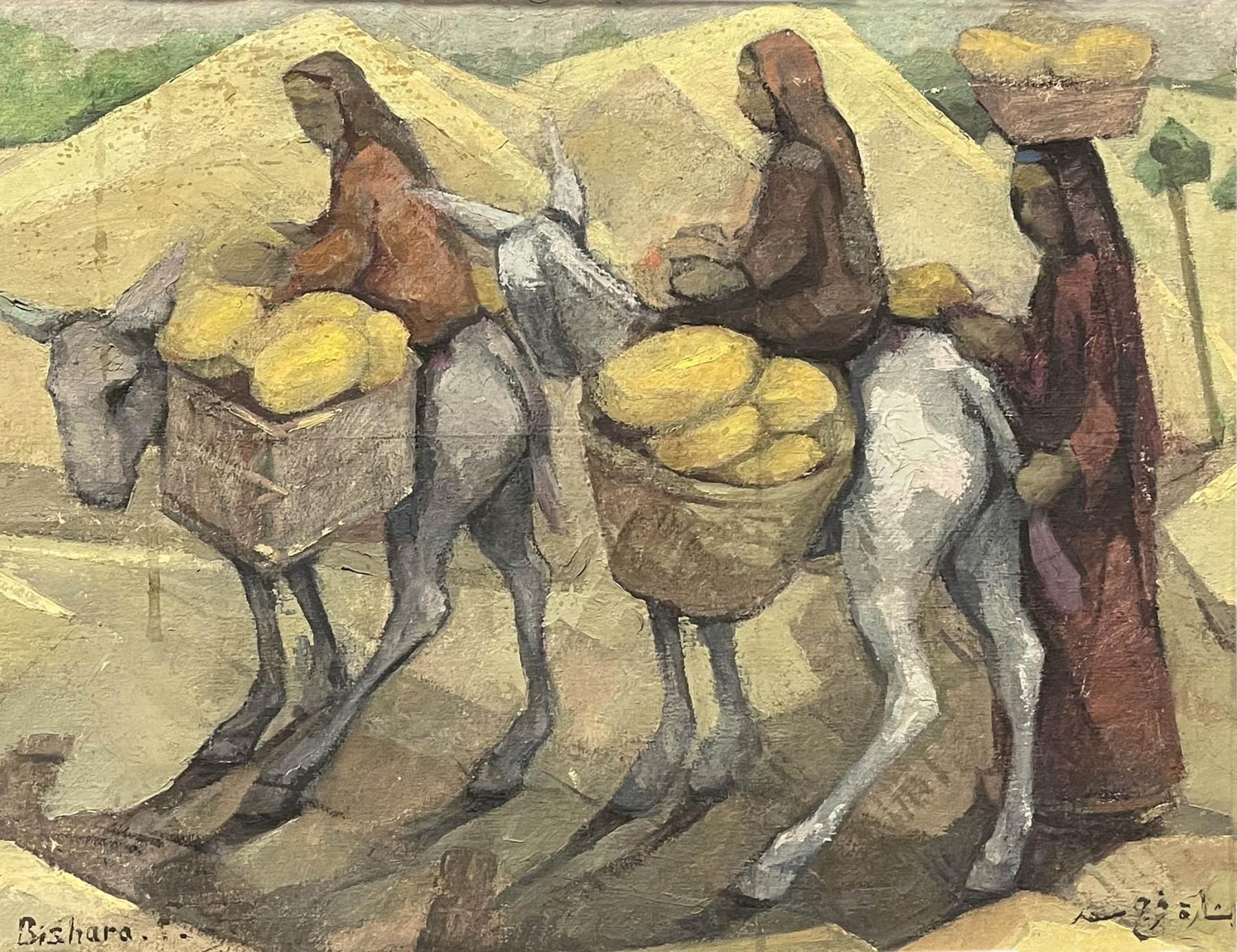
In 1920, the second exhibition was held and achieved new success after the establishment of the "Egyptian Society of Fine Arts." The society's board members were elected in 1921, with honorary presidency by Prince Youssef Kamal and Her Highness Princess Samiha Hussein, and artistic direction by artist Mohamed Hassan, the deputy of the School of Egyptian Arts and Decorations at the time.
The exhibition was inaugurated by the leader Saad Zaghloul on April 15th and featured the participation of 55 artists, including 32 Egyptians and the rest from foreign countries. Among the participating artists were the sculptor Mahmoud Mokhtar, Othman El-Dessouki, Antoine Haggiar, and the painters Mohamed Hassan, Mohamed Nagi, Mahmoud Said, Ali Al-Ahwani, Mahmoud Fouad Morabit, Moustafa Mokhtar, Kheirat El-Amri, Youssef Kamil, Ragheb Ayad, Hafez Ismail, Labib Tadros, Mohamed Bahgat Nadim, Ayoub Beshara, and others.
The exhibitors included Zainab Mabrouk, the wife of Mahmoud Sarie, Nafisa Abdeen, Nagaf Mahmoud Mustafa, Amina Shafiq, and the wife of Hajazi Pasha; all hobbyists.
Among the resident foreigners, John Yontila, an art teacher at the School of Arts and Decorations, participated, as well as Youssef Bonillo and the French painter Gabriel Beissy, the director of the School of Egyptian Fine Arts. The talented Italian artist Cazonato Daforno, renowned for her watercolor flower paintings, also participated and taught art to the artist Mahmoud Said at the beginning of his artistic career. Additionally, the English artist William Stewart, the director of the School of Arts and Decorations, known for his decorative designs, took part in the exhibition.
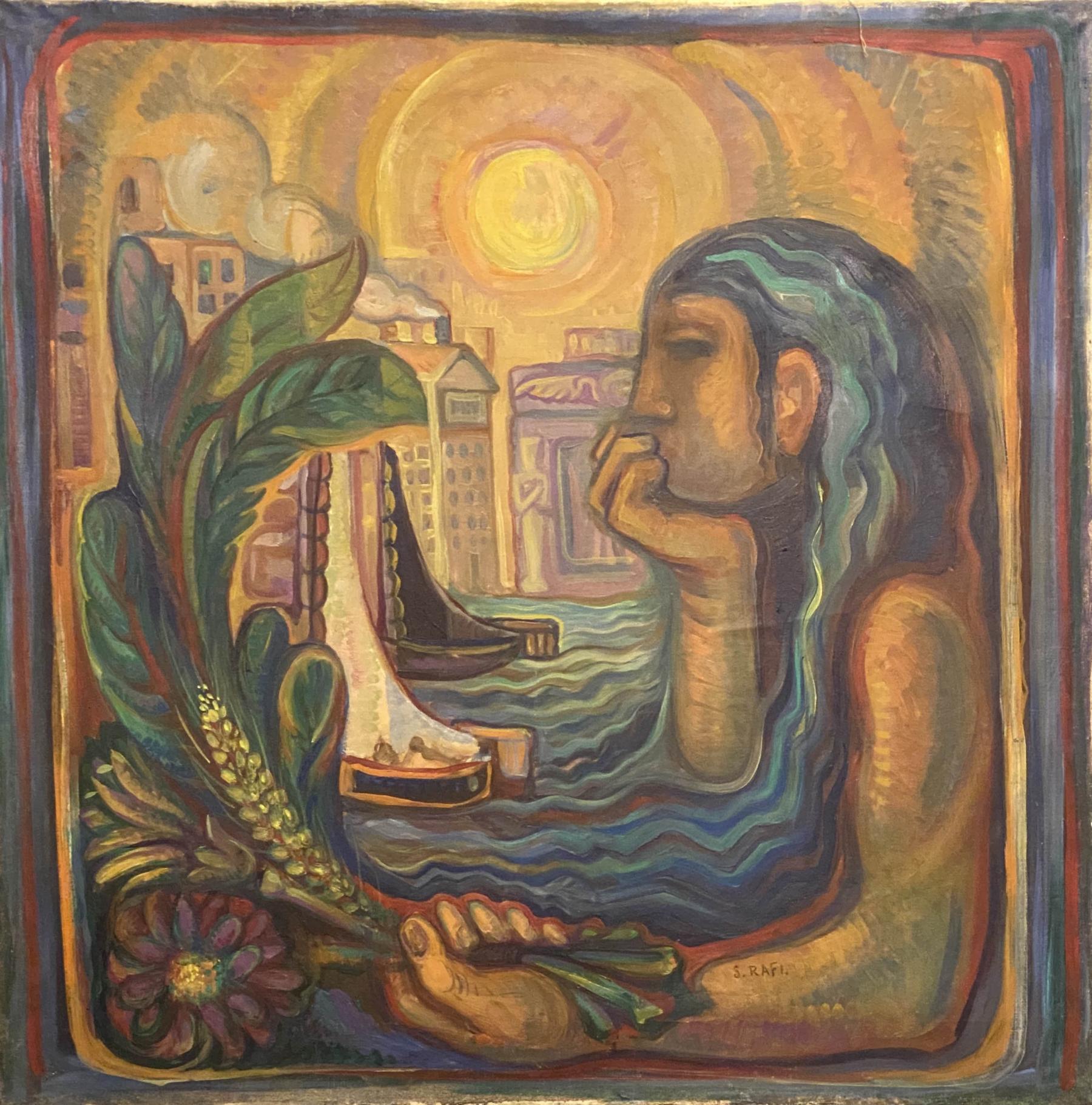
In the spring of 1922, the second exhibition titled "Salon Al-Qahira" was inaugurated, organized by the Egyptian Society of Fine Arts under the patronage of Princess Samiha Hussein. As mentioned in the exhibition guide, it was funded by "Dar Al-Funun Wal-Sana'at Al-Masriyya" owned by Fuad Abdelmalik and his partners. The exhibition's secretariat was entrusted to the artist Ragheb Ayad. It featured the participation of 27 Egyptian artists and 15 foreign artists, including Mahmoud Said, Youssef Kamil, Ragheb Ayad, Mohamed Nagy, Ahmed Sabry, Shafik Sharobim, and Youssef Tahir.
Among the hobbyist participants were Mohamed Amin El-Amri, Mustafa Mokhtar, Mohamed Khairat El-Amri, Zaki Abdo, Raoul Cassab, and Mahmoud Ibrahim. The foreign artists included Frederick Bonneau, Gabriel Beissé, Colon, Youssef Bonillo, and the Turkish painter Hassan Hedayat Shirazi. The exhibition also saw the participation of several ladies, including Princess Samiha Hussein, Gazelle Khourshed, Khadija Abu Al-Az, Ayda Kamil Awad, and Miss Airoth. Some Egyptian ladies, led by Huda Shaarawi, also assisted the society by donating money, showing their love for supporting the arts.
Then, Fuad Abdelmalik believed that the best way to sustain and strengthen the exhibition was to establish a strong society to sponsor and manage it. Among those who responded to his invitation to join this society was the prominent collector Mohamed Mahmoud Khalil. Thus, the "Society of Fine Arts Lovers" was founded on May 12, 1923. The first

Fuad Abdelmalik (1878-1955) studied at the Frère College and graduated in 1895. Due to his interest in fine arts, he assisted his teachers in creating theaters and settings for school events. His father was a merchant specialized in supplying furniture and clothing to the government. In 1896, he received lessons in drawing and photography from the French George de Bièvre until he mastered the art in a short period. He was then appointed as an assistant to the photographer Lekjyan due to his expertise. Later, he traveled to Munich and joined the School of Fine Arts there. Upon his return to Egypt, he worked in the field of painting and engaged in various activities related to agriculture and dairy factories. However, he was forced to liquidate his business in 1900.
In 1908, he left Egypt for Europe, where he stayed for several years until he learned about the opening of the School of Fine Arts in Egypt. He returned to Egypt and established relationships with the early Egyptian artists. He founded "The House of Egyptian Arts & Handicrafts" to promote the arts and held the first exhibition at its headquarters on 21 Bulaq Street. He later formed the "Society of Fine Arts Lovers" and served as its secretary-general. He also established the Wax Museum. Fuad Abdelmalik passed away in 1955.
In 1923, the third "Salon Al-Qahira" exhibition took place under the patronage of Princess Samiha Hussein. She participated in the exhibition by presenting small bronze statues of Pharaonic dancers. Prince Mohammed Ali also participated with six watercolor paintings of flowers.
Ninety-three painting and sculpture artists participated in this exhibition, including Mahmoud Said, Mohamed Nagy, Youssef Kamil, Ragheb Ayad, Ahmed Sabry, Antoine Gibran Higazy, Mohamed Thabet, Pierre Baby Martan, Ali Al-Ahwani, Labib Tadros, Shaban Zaki, Ahmed Youssef, Mustafa Mokhtar, Mahmoud El-Babli, and Cassassinov.
As an encouragement and support to the society and the Egyptian art movement, the government announced the establishment of an exhibition for the society's artists at the Savoy Hotel in 1924. In 1925, the state allocated a financial amount for the acquisition of artworks, in addition to an annual grant to the society to fulfill its objectives.
Foreign governments also recognized the significance of this society and its significant artistic activity. They organized several international art exhibitions to strengthen and foster relations between Egyptian and foreign artists. Among them were the Islamic Arts Exhibition in Alexandria (1925), the Belgian Art Exhibition (1927), the Egyptian Landscape Painting Exhibition (1923), the Iranian Photography Exhibition (1937), the French Exhibition of Fine Arts and Books (1938), the Contemporary French Sculpture Exhibition and the International Solar Imaging Exhibition (1939), the Turkish Carpet Exhibition (1944), the Solar Imaging Exhibition and the First Postal Stamps Exhibition (1946), the Islamic Art Exhibition and the International Exhibition of Fine Arts (1947), the Italian Modern Painting Exhibition (1949), and the Egypt-France Exhibition in Paris (1949), where the artist Samir Rafi participated with his famous painting "Inspiration of Egypt," which received acclaim from many European art critics, including Emile Azar in his book "Modern Egyptian Painting."
"The dignified silence captured on the face is broken with the gesture of the character, who brings to Egypt the secret of the gods, whose thoughts are still alive in the Valley of the Kings." Art exhibitions continued in Egypt and abroad in the 1950s, such as the Spanish Exhibition and the International Exhibition of Applied Arts (1950), the Indian Art Exhibition (1951), and the Italian Exhibition of Mosaics by Ravenna (1957). Over the years, the Salon Al-Qahira continues as an annual gathering for Egyptian artists, where they showcase their creations, compete with their artistic works and yearly innovations. Each year, one of the Egyptian artists takes turns organizing the exhibition, with special committees selecting the artworks. This year, we celebrate the centenary of the "Society of Fine Arts Lovers" in its 60th edition, in parallel with the "Al-Tala'i" competition for young artists in its various cycles, which the society organizes annually. This year marks the 62nd edition of Al-Tala'i, as part of the society's centennial celebrations. The journey of fine arts continues, with successive generations of artists raising the banner of creativity, achieving the system of soft power, and reinforcing Egypt's leadership in the arts.
By: Dr. Ashraf Reda
Professor of Fine Arts
Chairman, Arts & Culture Complex

